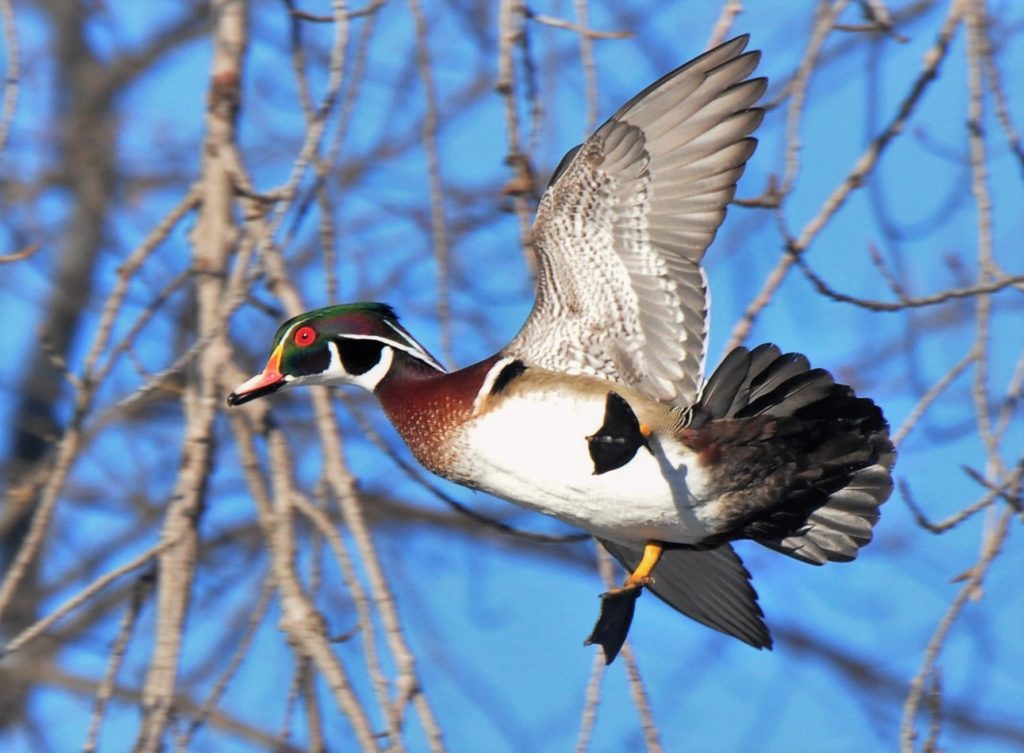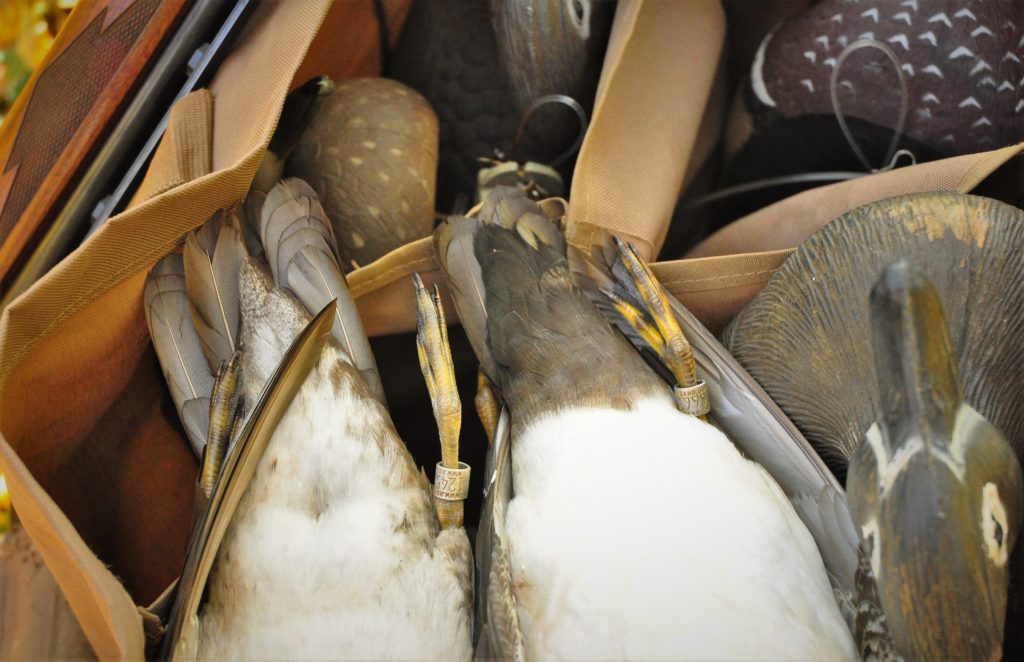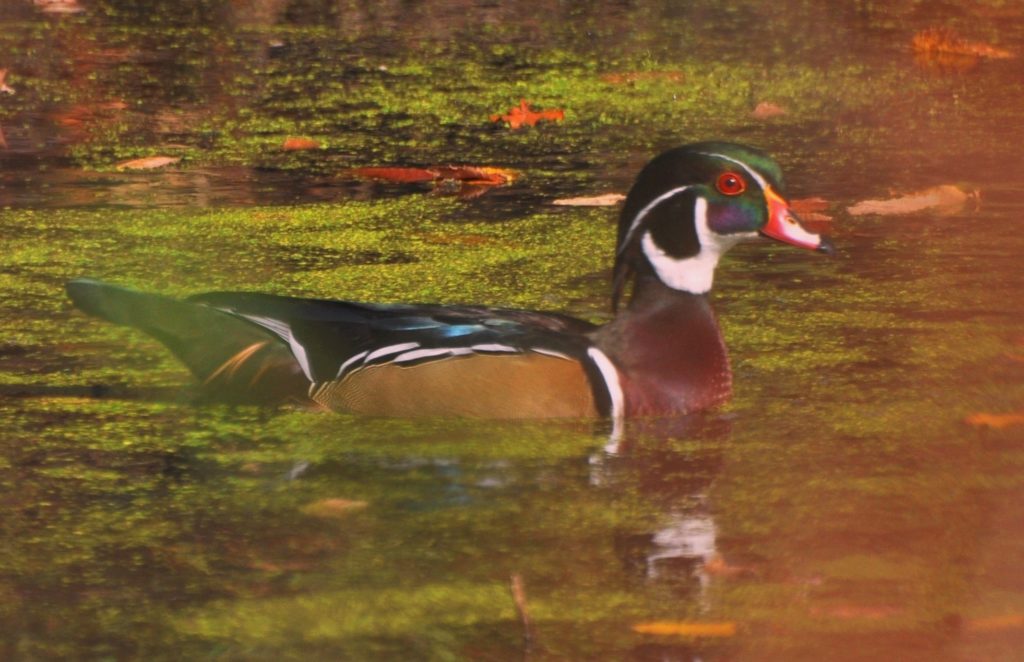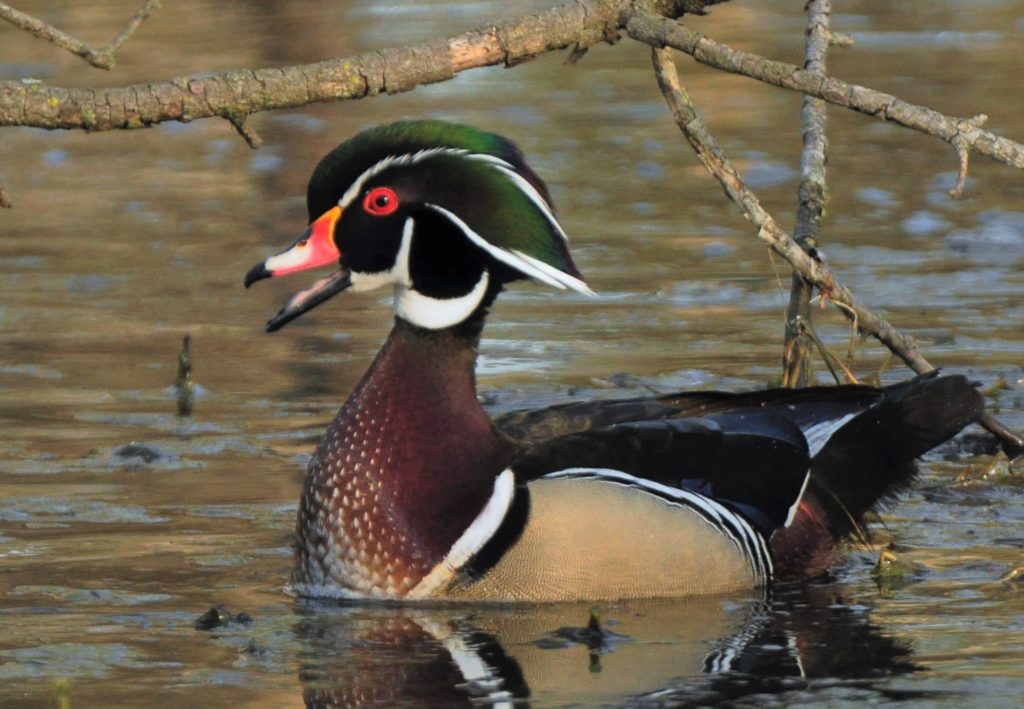Photography courtesy of Lowell Washburn, all rights reserved.
October is a month like no other — four full weeks of unparalleled beauty. If I could figure a way to make it happen, I’d take October, put it in a bottle and then relive the month over and over again.
For the outdoor enthusiast, there are a million things to see and do in October. It’s a time when autumn colors peak, blue jays get noisy, fish launch their fall feeding frenzy, and sleek white-tail bucks put the final polish on glistening antlers. Best of all, October is the month I get to spend with wood ducks.

Arrayed in a stunning blend of iridescent plumage, the wood duck is our most beautiful waterfowl. Light skinned and mild in flavor, October wood ducks are as spectacular on the dinner table as they are on the wing. A longtime favorite of Iowa hunters, wood ducks rank third in our annual harvest. Only the blue-winged teal and mallard duck is bagged in greater numbers.
As the name implies, wood ducks spend most of their lives in and around trees. Unlike most waterfowl, wood ducks nest in tree cavities, forage through forested bottomlands in search of grapes, acorns, and other natural mast crops, and then spend the remainder of their time loafing along timber shrouded stream channels, secluded backwaters, and willow chocked sloughs.

In order to seriously pursue wood ducks, a waterfowler must embrace a radical departure from the norm. Perhaps more than any other web-foot, wood ducks are habitat specific. In sharp contrast to more traditional duck hunts, where hunters may encounter several species during a single outing, wood duck enthusiasts are most likely to see wood ducks and nothing else.
Getting to where those ducks want to be may require a bit of extra work, like hacking your way through a jungle of briary vegetation to access a secluded oasis no larger than your living room. But rest assured that if the wood ducks show, the rewards will dramatically exceed any effort you may have expended. In the wide world of waterfowling, there are few thrills that can match the sight and sound of incoming wood ducks — dropping like meteors — as they zig zag down through the treetops on the way to your decoys.

But like fall color itself, the time we get to spend with wood ducks is short lived. In Northern Iowa, wood duck numbers peak during late September, and then begin a gradual, but steady, decline. By mid-October, the exodus is escalating. By November 1, only a few isolated stragglers remain, at least during most years.
But today I’m happy to report that I’ve discovered a way to preserve at least some of the excitement associated with seeing and hunting this incredible gamebird.
While sitting at one of my favorite areas last week, I was taken by surprise when a flock of around a dozen woodies dropped in from behind. Focusing on a colorful drake, I shouldered the gun, fired, and watched the bird fall. I quickly swung the muzzle toward another bird but, at the last second, decided not to fire. Back home, I already had three fat wood ducks cooling in the frig from the day before. The drake I had just shot made four – meaning we were set to enjoy roast wood ducks and wild rice for two nights in a row.

The afternoon flight had just begun, and it wasn’t long until more ducks came into view. Trading shotgun for camera, I began taking photos as a steady succession of woodies descended from the sky; some groups actually landing within six or eight yards of my makeshift blind. Switching from still photos to video, I had soon recorded four separate segments – full color movie clips, complete with the sound of rustling vegetation and the audible rush of wild wings. By the time the sun began to set, I had been treated to close encounters with more than 250 colorful woodies.

October – as always — is racing by. Leaves are falling. Wood duck numbers are waning. Our delicious duck dinners are long gone. But I still have those late afternoon videos, which I continue to watch over and again. I guess those full color clips are as close as I’ll get to putting October in a bottle.


 Tom Cope
Tom Cope Sue Wilkinson
Sue Wilkinson Susan Judkins Josten
Susan Judkins Josten Rudi Roeslein
Rudi Roeslein Elyssa McFarland
Elyssa McFarland Mark Langgin
Mark Langgin Adam Janke
Adam Janke Joe Henry
Joe Henry Kristin Ashenbrenner
Kristin Ashenbrenner Joe Wilkinson
Joe Wilkinson Dr. Tammy Mildenstein
Dr. Tammy Mildenstein Sean McMahon
Sean McMahon